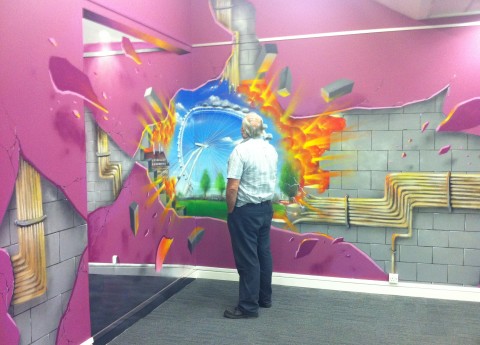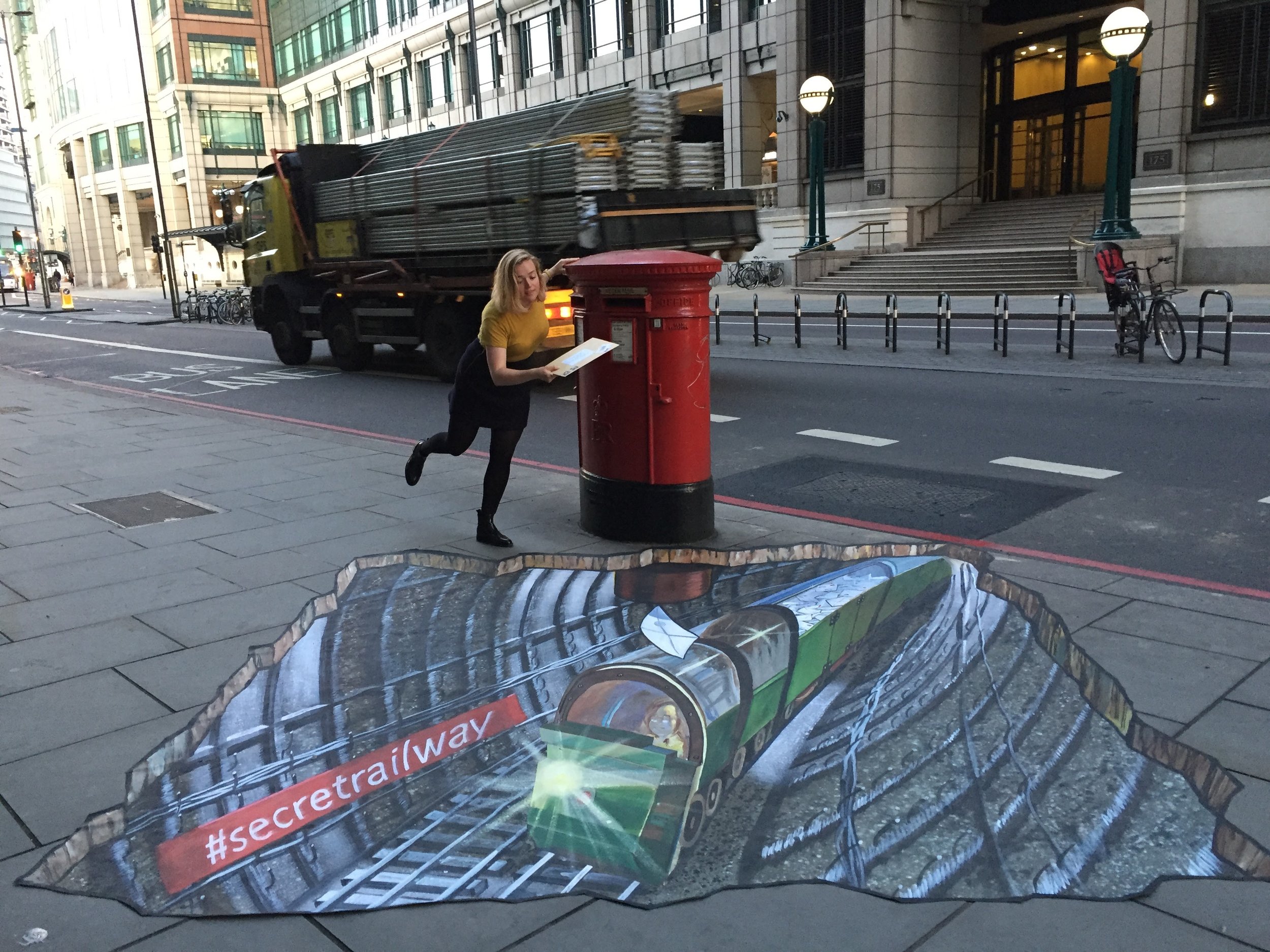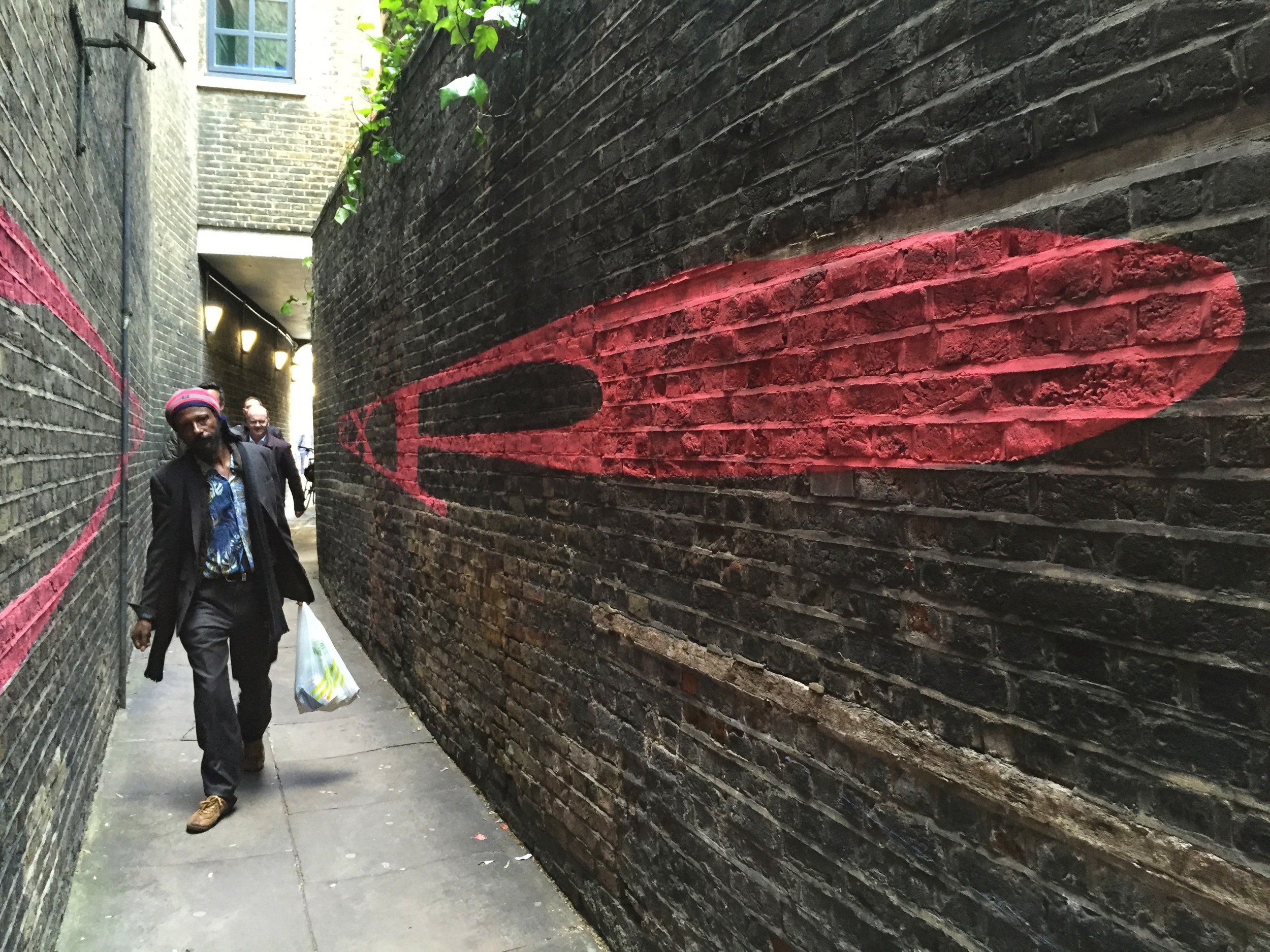The power of anamorphic artworks
Anamorphic pavement art never fails to surprise and delight passers by. The anamorphic “wow” factor is created by the perceived height or depth of the image. The impact of the image can only be experienced from a single focal point, from others angles the drawing will appear distorted.
Creating 3D artworks is one of our most popular services since they provide the focus for a publicity event and an opportunity to engage with the public. People can’t resist interacting with them, taking and sharing photos, so the promotion gets great traction on social media sites.
What is anamorphosis?
Anamorphosis is a distorted projection or perspective requiring the viewer to use special devices or occupy a specific vantage point to reconstitute the image. The word “anamorphosis” is derived from the Greek prefix ana-, meaning back or again, and the word morphe, meaning shape or form.
Types of projection
There are two main types of anamorphosis: Perspective (oblique) and Mirror (catoptric). Examples of perspectival anamorphosis date to the early Renaissance (15th Century). Examples of mirror anamorphosis occurred at the time of the late Renaissance (16th Century).
With mirror anamorphosis (as in the image above), a conical or cylindrical mirror is placed on the drawing or painting to transform a flat distorted image into a three dimensional picture that can be viewed from many angles. The deformed image is painted on a plane surface surrounding the mirror. By looking uniquely into the mirror, the image appears undeformed. This process of anamorphosis made it possible to diffuse caricatures, erotic and scatologic scenes and scenes of sorcery for a confidential public.
Brief history of anamorphosis
Leonardo’s Eye (Leonardo da Vinci, c. 1485) is the earliest known definitive example of perspective anamorphosis. The prehistoric cave paintings at Lascaux may also possess this technique because the oblique angles of the cave would otherwise result in distorted figures from a viewer’s perspective.
Hans Holbein the Younger is well known for incorporating this type of anamorphic trick. His painting The Ambassadors is the most famous example for anamorphosis, in which a distorted shape lies diagonally across the bottom of the frame. Viewing this from an acute angle transforms it into the plastic image of a skull.
During the 17th century, Baroque trompe l’oeil murals often used this technique to combine actual architectural elements with an illusion. When standing in front of the art work in a specific spot, the architecture blends with the decorative painting. The dome and vault of the Church of St. Ignazio in Rome, painted by Andrea Pozzo, represented the pinnacle of illusion. Due to complaints of blocked light by neighbouring monks, Pozzo was commissioned to paint the ceiling to look like the inside of a dome, instead of actually constructing one. However, the ceiling is flat, and there is only one spot where the illusion is perfect and a dome looks real.
In 18th and in 19th century, anamorphic images had come to be used more as children’s games than fine art. In the 20th century some artists wanted to renew the technique of anamorphosis. Important to mention is Marcel Duchamp’s interest in anamorphosis, some of his installations are paraphrases of anamorphoses. Salvador Dalí also utilized the effect in a number of his paintings. Jan Dibbets conceptual works, the so-called “perspective corrections” are examples of “linear” anamorphoses.
anamorphic images in marketing campaigns
Creating bespoke anamorphic images (or 3D art as we often call them) is one of our most popular services. It's not hard to see why - passers by love to interact with the art and share their photos online.
Key Facts:
Target specific locations
Compelling viewing
Engaging and photogenic
Images shared across the Internet.
Check out some of our recent images in action below or read a case study of a campaign we did for Cravendale for more info.






Commission a custom artwork
If you'd like to commission our 3D artist, please contact us for a consultation.




